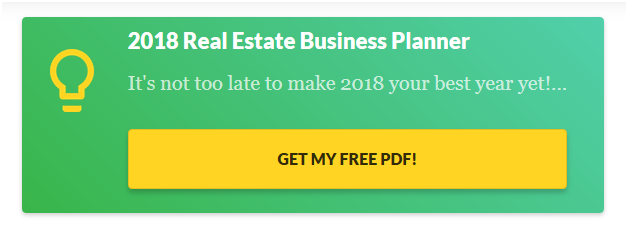Leads are the lifeblood of growing businesses. Their quality and quantity can significantly help you reduce customer acquisition cost – ultimately leading to a better bottom line.
What most small to midsized business owners often undervalue though is that you can improve your lead generation from blogging.
In this post, we’ll cover 6 tips that will help you create a healthy amount of quality leads from you blog.
1. Request for proposals (RFPs)
Simply put – this lead generation technique is an absolute game changer.
RFPs are forms that you can place in the blog that directly solicit readers. The biggest pro about this technique is that there are no gimmicks. People that fill these forms are burning hot leads! In a lot of cases all you got to do is call to close the sale.
Here’s an example of an RFP from one of our blog posts:

If your aim is to increase lead generation through blogging, then RFPs are a necessity that you can’t avoid.
Let us know if you don’t know how to create or implement an RFP. We add RFPs on blog posts that we create for clients that have signed up to our blog management solutions. These leads drop directly to the clients CRM. We can add RFPs for you too!
2. Giveaways
People generally love free things… but they’re wary of signing up for free stuff online because the internet isn’t a place where trust is gained easily.
There are a number of considerations that you need to go over before you start a giveaway campaign.
- What are you going to give away? A guide? Discount?
- What’s in it for the subscriber?
- Does the giveaway complement the blog post?
- How much is the giveaway going to cost you?
- What do you hope to achieve from the giveaway?

Guides, planners, eBooks, and other knowledge sharing giveaways are popular. Mostly because it’s a onetime cost vs. a discount that will haunt you later. When getting these made, make sure the content is:
- Valuable
- Evergreen
- Able to market your business
Make sure you get the leads name, phone number, and email before you give away the great content you’re going to share.
The easy way to do this is to get a giveaway made and then promote it in blog posts in pop ups that require them to fill out information.
Let us know if you need help creating a giveaway. We can write the content, design the guide, and add links to it too.
3. Email lists
Perhaps the oldest and most common lead generation technique covered in this post is the creation and implementation of email lists.
Email lists are an excellent technique to start putting into effect what you learned about how to get more leads from blogging because they’re easy to execute.
You’re going to have to sign up for a service like MailChimp, Benchmark, or GetResponse. You can then link your blog posts with a form that will directly drive all signed up email addresses to a list on the server of the service you signed up for.

The great thing about services like MailChimp is that you can configure an automated email campaign.
For example, let’s assume you run a dental clinic.
You can configure it so that all leads that subscribe to your email list get a welcome email instantly. In this email, you can introduce yourself and your business.
To take it to the next level, you can set it up so that MailChimp sends an email to the user six months after they signed up. In the email, you can remind the subscriber that it’s been six months and they should schedule their check up if they haven’t already.
The possibilities of customization are endless. It’s highly recommended that you package blog posts as a newsletter and send it to the list monthly if you’re already blogging to generate leads.
4. Pop ups
Yes, they can be annoying! What can’t be ignored though is the fact that they can also be extremely effective.
Chances are that not everyone that lands on your blog posts will stay and read the entire post. In fact, purely based on statistics a higher percentage of users stay on a blog post for a lower amount of time and vice versa.
You need to make the most of the attention that you get from your visitors.

Experiment between small pop ups and those that take up the entire screen. The bulk of your focus though should be on the copy of the pop up and the design.
There are combinations of strategies that you can experiment with.
You can use a pop up to build an email list.
Pop up to push a giveaway.
And even put up special discounts through promo codes that you generate and push them through pop ups.
Try different variations on the various blog posts you put to see where you’re getting the best results.
5. Phone number
If you’ve got a talented and hungry sales team then you want to push your business toll free number every chance you get.
We recommend adding it your website or blog’s header.

You’d be surprised at how much business is still done on calls. This number is higher if you’re in the service industry.
Of course, you can go the conventional route and share the business landline number on a Contact Us page or on the footer, but chances are that the lead will get distracted in the process and end up not calling!
To optimize conversion, you want to make sure the phone number is easy to find.

Make most of the opportunity by plugging in the phone number on the header of your blog. You know how blogging can increase your leads, don’t lose on opportunities by making it difficult for this quality traffic to contact your team.
6. Killer call to actions (CTAs)
At the end of the day, you gotta call a spade a spade. When you break it all down, blog posts are ultimately inbound marketing material. That’s why you have to ensure the posts have great CTAs.
A call to action can be a request to share the post on Facebook, give feedback in the comments section, fill out an RFP, actually call the business, or any action you want the reader to take. The choice of CTA would vary depending on what you want the result to be, and of course it has to make sense in the content.
That’s not to suggest that you have to hard sell in the blog posts. Keep the CTA’s relevant and persuasive, but there’s a fine line between great and distasteful. Suggest… don’t push – after all no one likes being sold to.
Generally, novice writers limit CTAs to the last line or paragraph of the blog post. Earlier in the post, we covered the fact that not everyone is going to get to the conclusion of each post that you publish. Therefore it makes perfect sense to mix it up with the CTA.
Experiment placing them in the intro, body, and play it safe by trying to convert the reader into a lead by doubling with a CTA in the conclusion.
Get the help you need with CTAs, content for you email marketing, newsletters, or even by blog posts by getting in touch. Our team of professional writers will help you generate quality leads by delivering content that’ll drive traffic to your blog and then persuade them through content that’s written to convert!

